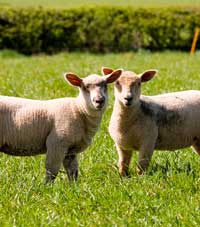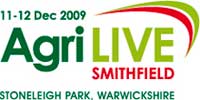Winter lamb selection tips

Selecting lambs for slaughter may be second nature to most sheep farmers, but farmers are being reminded that the changing nature of lambs as the year draws to a close means their selection methods and criteria may need adjusting.
EBLEX north east regional manager Steve Powdrill says the main difference to account for is the deminishing killing out percentage as lambs age. “Larger guts and bigger bones as lambs grow older and increase in size will mean there is a lower lean meat yeild from a lamb now compared to one of a similar weight earlier in the year.
“This means farmers need to weigh lambs regularly and ensure those they are selecting for slaughter are of an appropriate weight for the outlet they are supplying. Lambs at the the end of the year and the early part of next year could well need plenty of feed, be that concentrates or forage crops to ensure they are well enough finished. And anyone with entire ram lambs left on farm now should finish them as soon as possible or they could end up with big framed lambs which don’t carry a lot of flesh.”
Additionally, when selecting lambs be sure it is flesh and not fat being felt, explains Mr Powdrill. “Where lambs have lost abit of condition during a store period that flesh will need putting back on and their is a risk of excess fat being laid down when this happens. Concentrate fed lambs will generally feel firmer fleshed than grass fed lambs,” he explains.
Concentrate-fed lambs should be handled at least once a week as they can change dramatically in a small space of time when being well fed, he says. “While weighing is a good guide it is no substitute for handling lambs and it is essential to take account of the extra wool on lambs later in the season when handling them. It may seem like a minor point, but the fleece on a lamb in November and December is markedly thicker than that on a lamb in July.
“Key handling points for lambs are the loin, ribs and dock, but the loin is the ultimate guide and once a lamb is fit across the loin it should be sold as anything it gains after that is likely to be fat and not flesh. What has to be remembered when drawing lambs is that comparative to cattle and pigs a lamb has the smallest eye muscle area of the three speciees, so it doesn’t take much fat for a lamb to be overfat.”
And, with many lambs being finished outside on brassica crops Mr Powdrill says it is essential to follow the clean livestock policy when sending lambs for slaughter. “Dirty lambs should have their belly wool taken off and their tails clipped to ensure their is minimal chance of contamination at the abattoir.”
Getting feedback from buyers can also be helpful, he suggests. “And if you get this feedback early in the season it will help you ensure your lambs meet target specification and hence maximise their value throughout the winter.”

To learn more about lamb selection and to brush up on your selection techniques visit AgriLive Smithfield at Stoneleigh Park on 11 and 12 December 2009.
